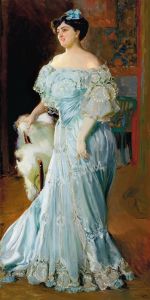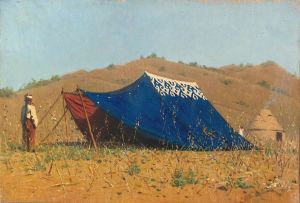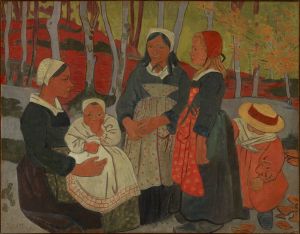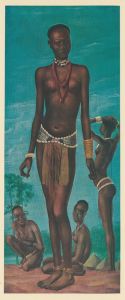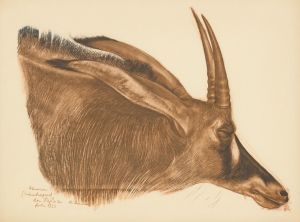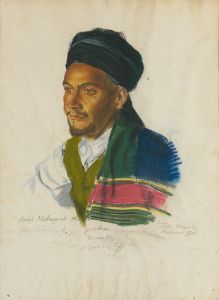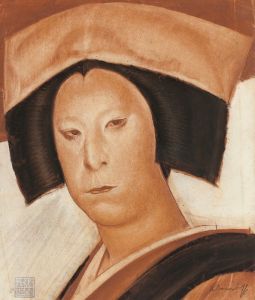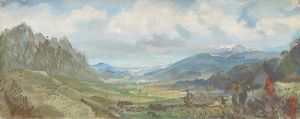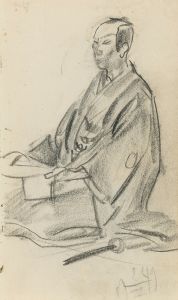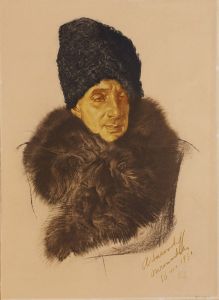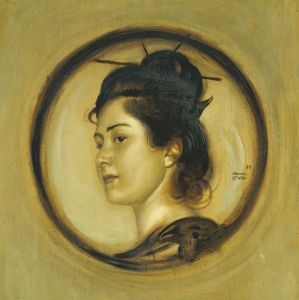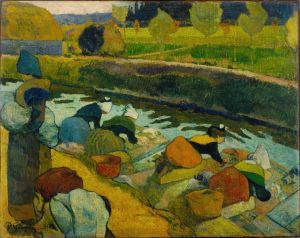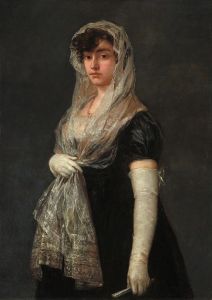
Notre guide mongol Kumbo
A hand-painted replica of Alexandre Jacovleff’s masterpiece Notre guide mongol Kumbo, meticulously crafted by professional artists to capture the true essence of the original. Each piece is created with museum-quality canvas and rare mineral pigments, carefully painted by experienced artists with delicate brushstrokes and rich, layered colors to perfectly recreate the texture of the original artwork. Unlike machine-printed reproductions, this hand-painted version brings the painting to life, infused with the artist’s emotions and skill in every stroke. Whether for personal collection or home decoration, it instantly elevates the artistic atmosphere of any space.
Alexandre Jacovleff (1887–1938) was a Russian painter and graphic artist known for his involvement in the artistic movements of the early 20th century. He was particularly recognized for his portraiture, as well as his depictions of exotic cultures and landscapes, which he encountered during his extensive travels. One of his notable works is Notre guide mongol Kumbo (translated as "Our Mongolian Guide Kumbo"), a painting that reflects his interest in ethnographic subjects and his ability to capture the essence of his subjects with meticulous detail and sensitivity.
The painting was created during Jacovleff's participation in the Croisière Jaune (Yellow Cruise), an ambitious transcontinental expedition organized by the French automobile manufacturer Citroën in 1931–1932. The expedition aimed to traverse Asia from Beirut to Beijing, showcasing the capabilities of Citroën's half-track vehicles while also fostering cultural and scientific exploration. Jacovleff was invited to join the mission as the official artist, tasked with documenting the journey through his art.
Notre guide mongol Kumbo is a portrait of a Mongolian guide who assisted the expedition during its passage through Mongolia. The artwork exemplifies Jacovleff's skill in portraying the individuality and dignity of his subjects. The guide, Kumbo, is depicted with a calm and composed expression, wearing traditional Mongolian attire. The painting highlights Jacovleff's attention to detail, particularly in the textures of the clothing and the subtle nuances of the subject's facial features. It also reflects his respect for the cultures he encountered, avoiding exoticism or caricature in favor of a more authentic representation.
Jacovleff's works from the Croisière Jaune, including Notre guide mongol Kumbo, are considered significant contributions to both art and ethnography. They provide a visual record of the people and landscapes encountered during the expedition, offering insights into the cultural diversity of the regions traversed. These works were later exhibited in France and other countries, earning Jacovleff acclaim for his ability to merge artistic excellence with documentary precision.
Today, Notre guide mongol Kumbo is regarded as an important example of Jacovleff's oeuvre and his commitment to capturing the human spirit through art. The painting is held in a private collection or museum, though specific details about its current location are not widely documented. Jacovleff's legacy endures as a testament to the power of art to bridge cultural divides and preserve moments of historical significance.





